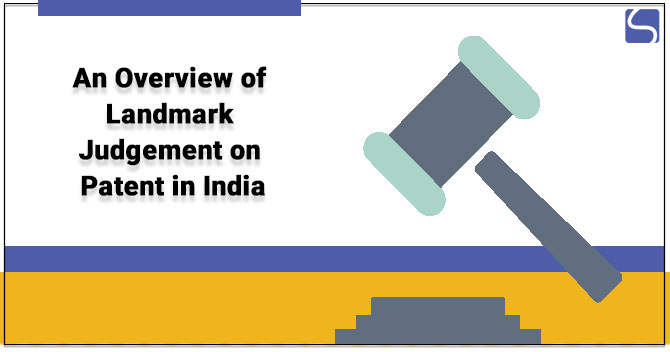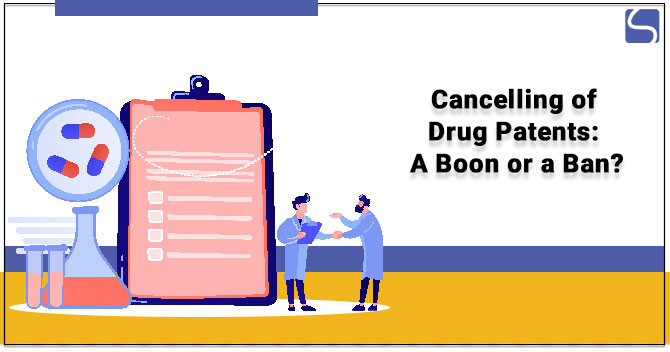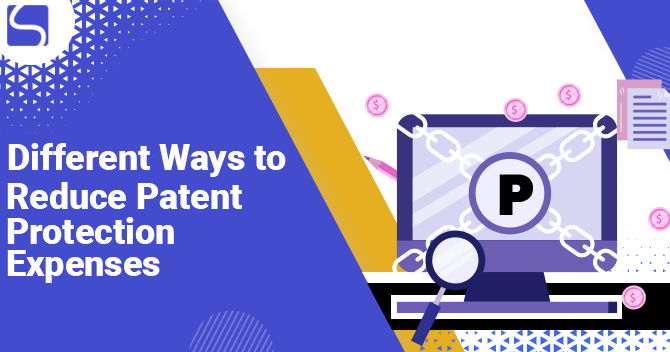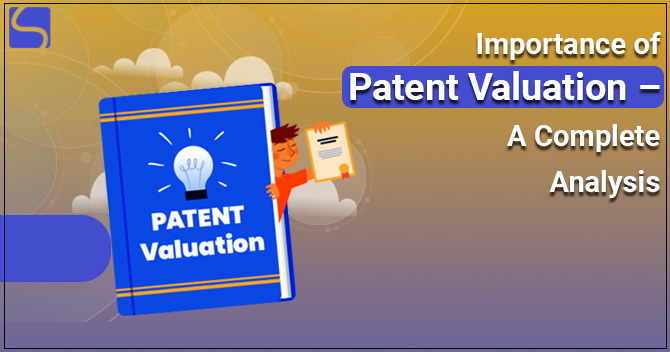An Overview of Landmark Judgement on Patent in India

Karan Singh | Updated: Jun 08, 2021 | Category: Patent
Patent Protection is certainly the leading priority for any organisation because it can keep them ahead of rivals and acquires stable income for years to come. However, some Patents stagger upon unexpected litigations that cost significant time and money for the company. In this blog, we have curated a list of landmark judgement on the Patent that only created the buzz in the authorised domain but also left a lasting impact on the constitutional framework of the nation.
Table of Contents
Cipla Ltd. Vs F. Hoffmann-La Roche Ltd. – Landmark Judgement in India
Two pharmaceutical companies, viz OSI Pharmaceuticals and Hoffmann-La Roche Ltd., have filed the petition for an enduring injunction of the drug due to Patent Infringement, interpretation of damages, accounts, & delivery against Cipla Ltd. Mumbai.
- Indian drug manufacturer Cipla won the landmark judgement against Roche in Delhi High court over the broad version of cancer treatment drug Eriotinib. The case was unique and distinctive as it is the first Patent litigation in the nation, which comprises pricing issues & public interest that prevent evergreening of the Patent.
- The next petition of Roche to the division bench also rejected in light of the trial findings of the judge. Also, the Court obtruded a cost on Roche for suppression of information regarding the eventually filed the application in India (IN/PCT/2002/00507/DEL).
- The proposed Patent application was on Polymorph Form B of Eroltinib Hydrochloride, which faces dissatisfaction in 2008 following the petition filed Cipla on Section 3d. Cipla claimed that Tarceva agrees to Polymorphic Form B is more steady and appropriate for oral dosage than the mixture available in 774 Patent comprise a mixture of Form A & B,
- In the year 2008, Roche sued Cipla before Delhi High Court, appealing that the common product Erlocip violates the former Indian 774 Patent claiming “Erlotinib Hydrochloride”. But, the trial judge declines the petition to bequeath injunction preventing Cipla from selling an inexpensive version of Tarceva on a version of public interest & incomplete Patent proceedings against 774 Patent. Cipla’s inexpensive version of the drug prices around 1/3 of Roche’s patented medicine.
- Before the Supreme Court, the next petition of Roche against an order issued by the section bench got disapproved due to an in-progress trial at the Delhi High Court.
Novartis AG vs Union of India
Yet another landmark judgement of the Patent Registration in India created a lot of tinkle in the drug manufacturing domain. This time Swiss Drug manufacturer Novartis faces refusal from the Patent control in the light of “unconstitutional” Patent law practices. The Swiss giant search a Patent for its cancer drug, Glivec; however, the Government cancelled their appeal on the ground of the given facts:
- The drug was neither distinctive nor innovative as per the Patent Law;
- The Patent was already approved for imatinib, which is an active ingredient of Glivec;
- The drug apparently adhered to Section 3 (d), which challenges the idea of incremental innovations.
As a result, the Swiss Manufacturer decided to sue the constitutionality of Section 3 (d) in the High Court, which was discarded in due consideration of the grounds as mentioned above.
TVS Motor Company Ltd. Vs Bajaj Auto Ltd. – Landmark Judgement on Patent
In the case of TVS Motors Company Ltd. Vs, Bajaj Auto Ltd. Tells about the disagreement concerning the illegal application of the Patent of the DTSI (Digital Twin Spark Ignition). The case is essential on the grounds of the parties’ financial stakes and application of the pith & marrow policy. This case is distinct as it takes Doctrine of Equivalent into account. Above all, the principles available in concluding the decision are also essential.
Cadila Healthcare Ltd. Vs Glochem Industries
In the current landmark judgement, the Bombay High Court took the validity of pre-grant Patent opposition into the description and announced that a new form of an existing substance couldn’t fall under the regime of Patent unless its claim exceeds prior art to make sure the dissimilar or improving effect.
- Glochem industries filed a petition prior to the Court after its pre-grant opposition to the Patent application of Cadila was disapproved by the Patent control. The main concerns of Glochem were that the Patent claim did not stick to originality and lacked boosting therapeutic effect, as per Section 25 (1) and Section 3(d) of the Indian Patents Act.
- As per the Glochem, Cadillac had filed to furnish considerable evidence before the Court that the new form of substance enhances the efficacy therapeutic. The entity also claimed that the disapproval of the controller’s opposition of the Patent resulted from misapplication & misconstruction of the provisions under Section 3 (d) of the Act.
This clash revolves around the substance known as clopidogrelbesylate, a salt imitative from clopidogrel, which is already patented in the United States.
After long-lasting deliberations, Bombay High Court opined that the previous actions of Golcem to control the opposition could act as landmark litigation ground. Moreover, the Court cited that the alleged misrepresentation by the Patent controller could harden the case; therefore, the Court decided to hold the order and directed the power to reconsider the matter.
Anrvs Union of India & Bayer Corporation & Ors
Another landmark judgement that has sounded strongly in the legal domain for years. Instead of petition filing for infringement, Bayer Corporation filed a writ appeal in the Delhi High Court requesting an injunction on the marketing consent application of Cipla in light of the infringement caused by their edition of the drug viz SORANIB.
This appeal was one of its types because it links drug consent to a Patent violation in India.
In reply, the Delhi High Court declined to stamp their approval on such demand and eventually imposed a cost of Rs. 6,75,000 on the applicant to prevent the upcoming occurrence of such actions.
- The Delhi High Court, in its judgement, simplified that the Drug-Patent Linkage mechanism is not a practical thing as both the Act removes on particular objectives and rights to check the Patent standard is with the Patent’s controller regime. Moreover, such linkage may have a radical impact on the country’s public health policy.
- Bayer contends that Section 2 of the Drugs and Cosmetic Act[1], in connection with Section 48 of the Indian Patent Act, 1970, establishes a Patent linkage mechanism that prevents anyone from taking marketing consent for a drug over a patented drug. The entity also claimed that the CIPLA’s “SORANIB” is a “Spurious Drug” as described under the Drugs Act.
- The Court further added that market consent of drug has nothing to take with the Patent violation. Therefore, Patent Infringement cannot come to effect unless it is established in a court law. Such arbitration is beyond the range of jurisdiction of Drug Authorities. This is indeed the landmark judgement when it comes to lawful and judicial complexity.
Conclusion
Patent protection in India is somewhat challenging, considering the influence available within our legal structure. The landmark judgements, as mentioned above, have made it evident that transparency on the applicable law is essential for the applicant before filing a petition against the defaulter for Patent protection.
Read our article:Benefits of Provisional Patent – An Overview














